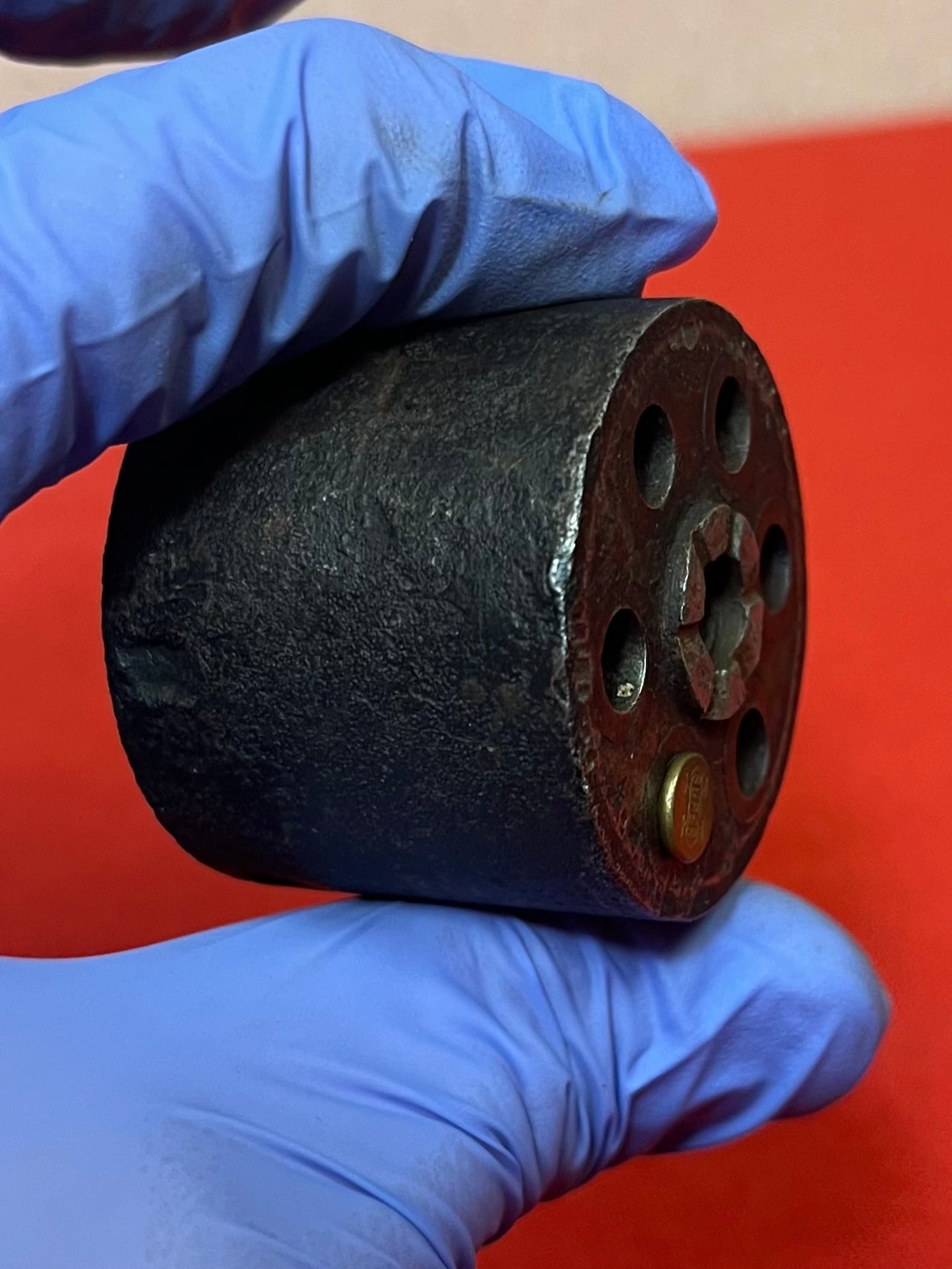(Scarce) Bacon Manufacturing Company Navy Revolver / Civil War Era
(Scarce) Bacon Manufacturing Company Navy Revolver / Civil War Era
Couldn't load pickup availability
1 of ONLY 1,000
History of Thomas K. Bacon -
The story of the various gun companies that were established and run by Thomas K. Bacon is rather interesting and is a tale that has yet to be fully told in detail. From most accounts Bacon was a machinist, who seems to have had his first brush with firearms manufacturing in 1840, when he purchased some property in Grafton, Massachusetts from gun maker Ethan Allen. Two years later, both Allen and Bacon relocated to Norwich, Connecticut and it appears that the nearly simultaneous migration was not coincidental. By 1846, Allen factory records show that Bacon was operating as a parts supplier, producing “cones and triggerguards”. Bacon’s work as a “jobber” for Allen probably came to an end when Allen relocated his company to Worcester, Massachusetts in 1847. As a result, it appears that Bacon went into the firearms production business on his own, forming Bacon & Company in Norwich, which he ran until 1857.
The firearms produced by this early Bacon company were primarily inexpensive single-shot percussion arms such as pocket, bar hammer, ring trigger and under hammer pistols as well as some pepperboxes. In 1857, after an unsuccessful attempt to raise the necessary capital to expand his business into the fairly new, and very lucrative percussion revolver business, Bacon & Company went out of business. Bacon spent the next year working as the plant superintendent for the Manhattan Firearms Company (also located in Norwich), but was very soon operating his own business again. The newly formed Bacon Manufacturing Company was established in Norwich in 1858 and Bacon went into the business of producing revolvers. His product line included pocket percussion revolvers based upon the Colt 1849 “pocket” model and were offered under both the Bacon moniker and under various tradenames and with custom retailer markings. In addition to the traditional percussion revolvers, Bacon introduced a line of self-contained cartridge revolvers in .22, .25, .32 and even .38 rimfire. However, the majority of these revolvers were manufactured in violation of the Rollin White patent (#12,648) for the bored-through cylinder, which was held by Smith & Wesson. As a result, Smith & Wesson successfully sued Bacon, resulting in a monetary damages award, as well as requiring all subsequent Bacon revolvers (as well as those unsold and remaining in inventory) that utilized the bored through cylinders to be marked with Rollin White and Smith & Wesson patent information, with royalties paid to Smith & Wesson for each revolver of that pattern subsequently sold.
In 1863, the chief shareholder of the Bacon Manufacturing Company became displeased with Thomas Bacon’s performance with the company, forcing him out of the business. With Bacon gone, the company continued in business through 1868 but with lackluster sales and minimal success. The firm was subsequently reorganized in 1868 and was reestablished as the Hopkins & Allen company, remaining in business through the second decade of the 1900s.
(Scarce) Bacon Manufacturing Company Navy Revolver (Flayderman 8A-015). Based upon available information, less than 1,000 of all variations of these .38 caliber rimfire revolvers were produced, in two distinct types and some sub-variations. The amount of minor manufacturing differences found in a revolver produced in relatively small quantities suggests that Bacon was never fully satisfied with the design and may have been making the improvements not only to try to evade the Smith & Wesson held White patent, but in an attempt to secure Ordnance Department contracts. The features common to all of the Bacon Navy Model Revolvers were that they were single-action, solid frame designs with a sheathed spur trigger. The guns had a six-shot cylinder and were chambered for the .38 rimfire cartridge. The revolvers had nominally 7 ½” long octagonal barrels, although some minor variations in length have been noted… (This one has a 7” cylindrical barrel opposed to the typically seen octagonal version) and has been sleeved for a .22 caliber cartridge.
The Revolver-
Civil War Era / 13 Inch overall length / 7 Inch barrel / 6 shot “Sleeved” cylinder (now .22 cal) Cylinder is 1 2/8 inches long and stamped with a “4” / Hammer holds and will release with trigger pull / Cylinder does not turn freely / Frame is stamped with an image of “wheat” possibly… on the bottom (shown in pictures) Relic condition / Sold AS-IS / Appears to have been worked on mechanically / Pictures provided for overall condition and quality / This is an “Antique” and can not be made to fire modern cartridges / Please inquire with any questions / Sales limited to persons 21 years of age and older / (FFL Not Required )
-Pictures came out a little darker “first picture” represents the item more accurately
Share
















































